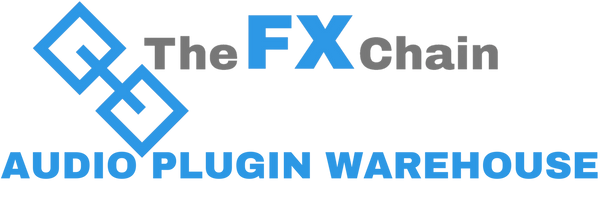Description
From the moment it was unleashed in 1978, the Lexicon 224 Digital Reverb — with its tactile, slider-based controller and famously lush reverb tail — single-handedly defined the sound of an entire era.
From Talking Heads' Remain In Light to U2's The Unforgettable Fire,* the Lexicon 224 remains one of the most popular digital reverb units of all time. Now you can track and mix with this singular piece of audio history with the Lexicon 224 Reverb plug-in.
Use of artist names does not constitute an official endorsement of Lexicon 224 Digital Reverb software.
A Breakthrough in Emulation
Using the exact algorithms and control processor code from the original hardware, the Lexicon 224 plug-in precisely captures all eight legendary reverb programs and the chorus program — based on the Lexicon 224's final and hard-to-find firmware version 4.4. The Lexicon 224 plug-in also incorporates the original hardware’s input transformers and early AD/DA 12-bit gain stepping converters.
Easy Navigation
Every parameter from the original hardware is present in the Lexicon 224 plug-in, and exposed as dedicated sliders and buttons. Lexicon’s distinctive Bass/Mid “split decay” adjustments and Crossover control set the highly tunable reverb image, while the Treble Decay rolls off high frequencies. Use the Depth control to adjust the distance between source and reverb, while Predelay produces a short delay between the sound source and the onset of reverberation. Diffusion affects how quickly the echo density in the reverb builds up over time.
Modeled to the Last Detail
For total authenticity, the UA-exclusive System Noise control enables or disables the inherent dynamic system noise of the original Lexicon 224 hardware — removing the modeled gain stepping, parameter zippering, and quiescent noise. Clicking the “Open” text to the right of the display panel exposes several hidden controls, including Input/Output gain and Pitch Shift, and even a selectable “Bug Fix” mode which enables/disables historical bug fixes from the Hall B and Chorus programs. Taken together, the Lexicon 224 plug-in is the world’s most authentic model of a true studio classic.
Key Benefits
- Use any audio interface, with both UAD Native and Apollo Realtime/UAD-2 versions included
- Track and mix with the legendary Lexicon 224 Digital Reverb, using the same algorithms as the original hardware
- Employ eight classic reverb programs and one chorus program on drums, vocals, guitars, and more from final Lexicon v.4.4 firmware
- Use the Plate and Concert programs for vintage '80s sounds
- Mix with presets from famous Lexicon 224 users Chuck Zwicky (Prince), Kevin Killen (Peter Gabriel), and others
Native UAD System Requirements
Included Version
UAD Native Runs on your Mac or PC without UA hardware.
UAD Spark and Native UAD System Requirements
- (Mac) macOS 10.15 Catalina, 11 Big Sur, 12 Monterey, or 13 Ventura
- (Windows) Windows 10 or Windows 11 (64-bit editions)
- Intel, AMD or Apple silicon processor
- Internet connection to download software and authorize native UAD plug-ins
- Free iLok account with iLok Cloud or iLok USB (2nd generation or higher)
- Free UA Connect application for managing native UAD plug-ins
Native UAD Instruments Requirements
- Sample-based UAD instruments require SSD storage with:
- APFS formatting (Mac)
- NTFS formatting (Windows)
- 1 GB to 10 GB available SSD storage (space requirement varies per UAD Instrument)
- Individual UAD Instrument storage requirements are listed on UA Connect’s UAD Plug-Ins tab
Notes
Operating systems not listed above are untested. Although untested operating systems may work, they are not supported by Universal Audio.
Pre-release and beta versions of operating systems are not supported.
Native UAD plug-ins on Apple silicon Macs automatically run natively on Apple silicon in DAWs that support native Apple silicon.
Windows running via Bootcamp on Mac systems are not supported.
